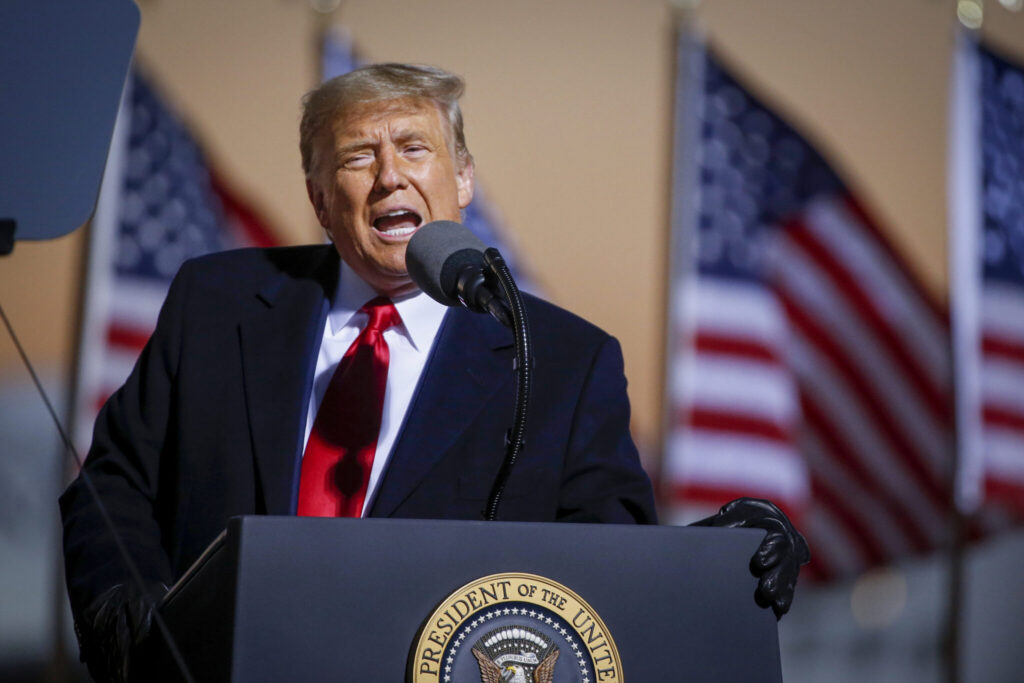Former President Donald Trump’s planned campaign visit to Minnesota on Friday will mark his return to a traditionally Democratic state that he has long argued he could carry. Trump will take a break from his hush money trial in New York to speak at the Minnesota GOP’s annual Lincoln Reagan fundraising dinner. Tickets start at $500, ranging up to $100,000 for a VIP table for 10 with three photo opportunities with Trump. The dinner coincides with the party’s state convention.
Quick Read
- Trump’s Minnesota Campaign: Former President Donald Trump plans to campaign in Minnesota, a traditionally Democratic state he believes he can win. He will be taking a break from his trial in New York to attend the Minnesota GOP’s annual Lincoln Reagan fundraising dinner.
- Historical Context: Trump narrowly lost Minnesota in 2016 and 2020. No Republican presidential candidate has won the state since Richard Nixon in 1972. Despite these losses, Trump has maintained his belief that he can win Minnesota, claiming discrepancies in the 2020 election results without evidence.
- Campaign Strategy: Trump’s campaign, along with his new state campaign chair, House Majority Whip Tom Emmer, is focusing on expanding their electoral map to include Minnesota, asserting that the state is potentially in play for the upcoming election.
- Political Landscape in Minnesota: Minnesota has a history of producing liberal icons but also elected Jesse Ventura, a former pro wrestler, as governor in 1998. This mixed political heritage keeps the state’s status as potentially competitive in play.
- Economic and Political Factors: The state’s strong economic indicators, such as a low unemployment rate and wage growth outpacing inflation, provide a mixed backdrop. Some experts believe that while 2020 was favorable for Biden, the upcoming election could be more challenging for him due to ongoing economic issues like inflation.
- Democratic Strengths and Republican Opportunities: Democratic strength in urban areas and recent shifts in suburban voter preferences towards the Democrats contrast with growing Republican influence in rural areas. The state has seen a balanced congressional delegation and narrowly held legislative majorities, underscoring its competitive nature.
- Ground Game and Campaign Efforts: While Trump’s campaign lacks a visible ground presence in Minnesota this cycle, Biden’s campaign has been proactive, involving key figures like the First Lady and Vice President. The state Democratic Party is leveraging its well-established turnout and fundraising operations, in contrast to the Minnesota GOP’s struggles with debt and internal disputes.
- Voter Perspectives: Local voters express mixed feelings about the presidential candidates, reflecting broader national concerns over economic and social issues. Some see the state as potentially competitive due to these factors.
The Associated Press has the story:
Trump will stump in Minnesota, traditionally blue state he insists he can win. Is it really in play?
Newslooks- ST. PAUL, Minn. (AP) —
Former President Donald Trump’s planned campaign visit to Minnesota on Friday will mark his return to a traditionally Democratic state that he has long argued he could carry.
Trump will take a break from his hush money trial in New York to speak at the Minnesota GOP’s annual Lincoln Reagan fundraising dinner. Tickets start at $500, ranging up to $100,000 for a VIP table for 10 with three photo opportunities with Trump. The dinner coincides with the party’s state convention.
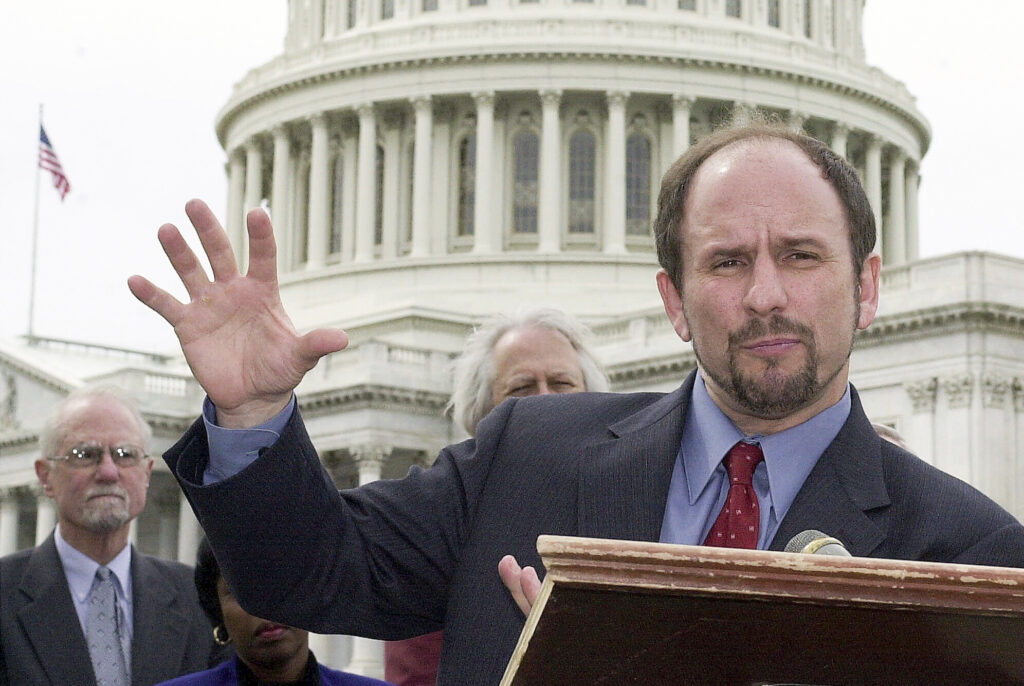
Trump’s new state campaign chair is House Majority Whip Tom Emmer of Minnesota, who’s supporting Trump even though the former president and his allies were instrumental in blocking Emmer’s attempt to become speaker last fall.
It’s unclear whether the Trump campaign will get any of the money raised. The campaign did not respond to an emailed request for comment, and Emmer declined an interview request. His co-host for the dinner, Republican Party of Minnesota Chairman David Hann, also did not respond.
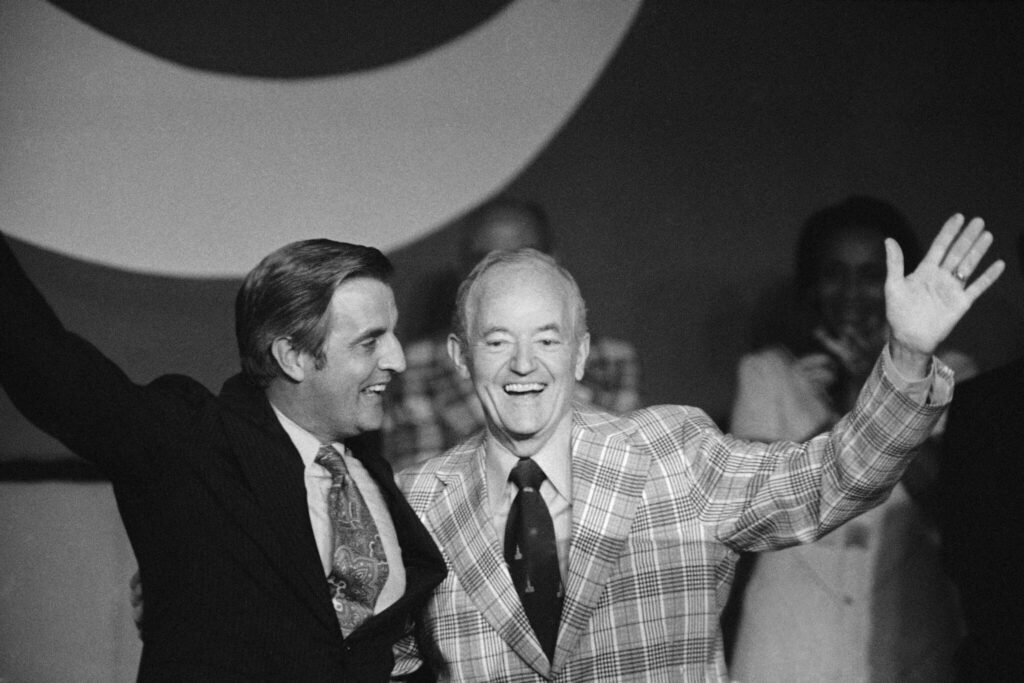
Trump came close to taking Minnesota and its 10 electoral votes in 2016, when he fell 1.5 percentage points short of Hillary Clinton in a state that no Republican presidential candidate has won since Richard Nixon in 1972. He returned to Minnesota several times in 2020, but Democrat Joe Biden beat him by more than 7 percentage points when he tried for a second term.
Still, Trump continues to insist he can win in Minnesota. He made a similar boast Saturday at a rally in reliably Democratic New Jersey.
At a private donor retreat in Florida on May 4, Trump campaign senior adviser Chris LaCivita discussed the campaign’s plans to expand its electoral map into Virginia and Minnesota, based on the Trump team’s growing optimism that both states are within reach.
“We have a real opportunity to expand the map here,” LaCivita told The Associated Press. “The Biden campaign has spent tens of millions of dollars on TV ads and in their ‘vaunted ground game’. And they have nothing to show for it.”
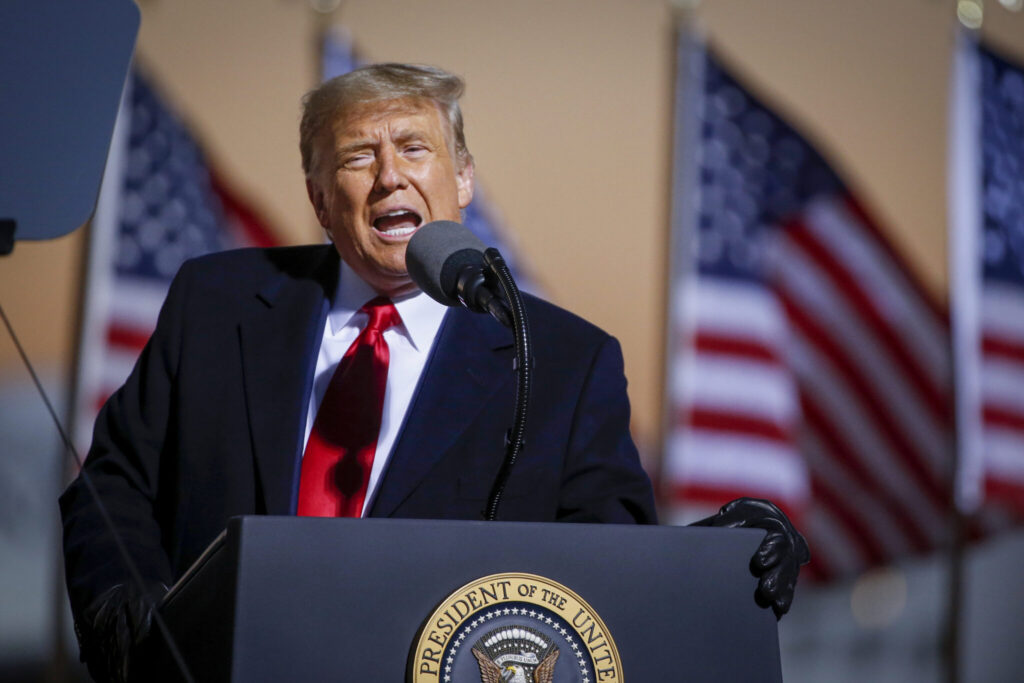
Trump appeared to falsely claim in an interview just ahead of Super Tuesday that he actually won Minnesota in 2020.
“Well, I thought we won it last time, I’ll be honest,” he told KNSI Radio in St. Cloud. “And I think we did win it.”
There’s no evidence that there were any serious irregularities in the 2020 election in Minnesota. A handful of challenges to the results failed.
Trump said it didn’t make sense to him that no Republican presidential candidate has won the state since 1972. “It’s not like, in my opinion, that blue,” he said.
He later vowed: “We’re going to put a heavy move into Minnesota, I promise.”
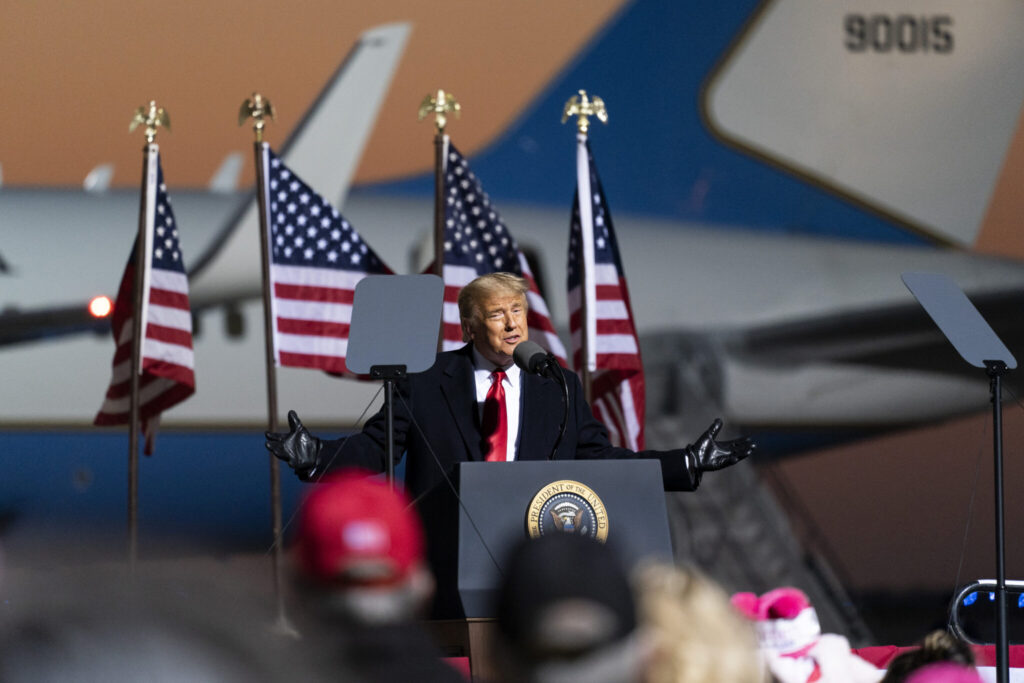
Whether that’s a misdirection play or a serious effort to win there remains to be seen. Minnesota has a long history of producing liberal icons such as Vice Presidents Hubert Humphrey and Walter Mondale and Sen. Paul Wellstone, but it’s also the state that shocked the world when it elected former pro wrestler Jesse Ventura as governor in 1998.
Experts are split on whether Minnesota really will be competitive this time. Some say the economy remains a Biden vulnerability despite low unemployment and rising consumer confidence. The state’s unemployment rate is 2.7%, well below the national jobless rate of 3.8%, thanks to strong job and labor force growth, with wage growth outpacing inflation, according to state officials.
University of Minnesota political scientist Larry Jacobs said that while 2020 was a good year for Biden in Minnesota, he’s not sure the president will be so well positioned this time.
“It looks to me like Minnesota is in play,” he said. “And if Minnesota is in play, Trump’s investment of time and money make sense.”
It’s not a great year to be an incumbent, Jacobs said. And while there has been meaningful improvement in the economy, inflation continues to hamper the president.
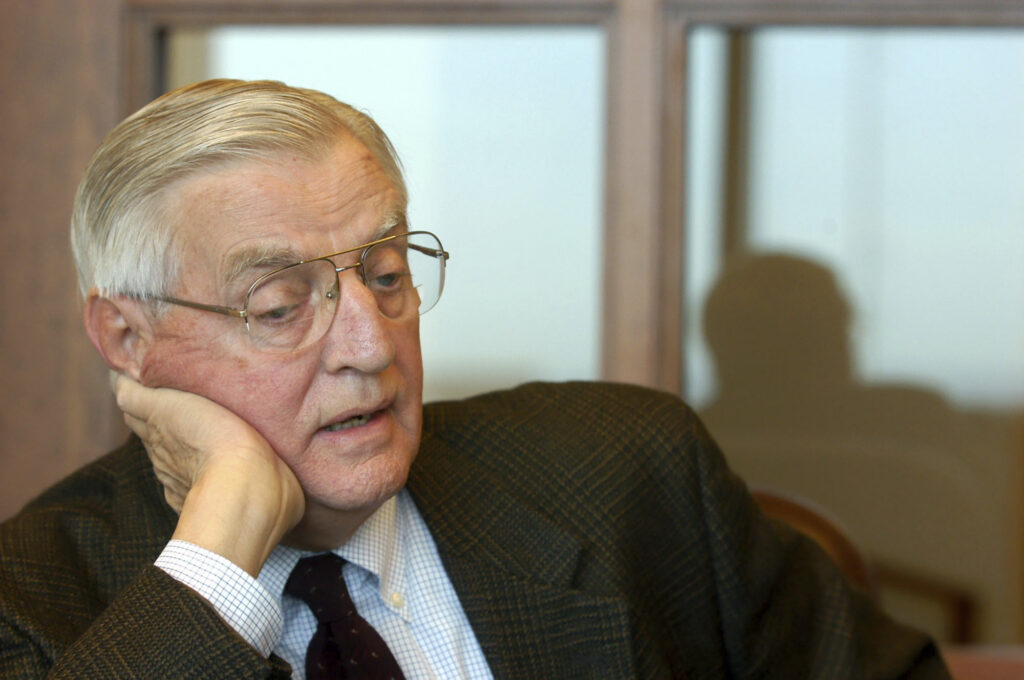
“It could force Biden to move money out of states he thinks he could take from Trump,” he said, “and he could always course-correct come fall.”
But Steve Schier, professor emeritus of political science at Carleton College, said Minnesota’s voting history leaves him skeptical, though he thinks the race could be close there.
“We’ve seen this movie before. In 2020 and 2016 it looked as if a Republican had a chance of carrying Minnesota, and it didn’t happen,” Schier said.
Ken Martin, chairman of what’s officially called the Minnesota Democratic-Farmer-Labor Party, said the state has been a battleground for some time. He thinks it’s more of a purple state than a deep blue state.
“It’s not surprising that Donald Trump would think he has a chance here,” Martin said. “But in a rematch between Donald Trump and Joe Biden, I think he will lose.”
While Republican strength has grown across rural Minnesota in recent years, that’s been offset by Democratic strength in urban areas and the shift of suburban voters toward Democrats that accelerated after the U.S. Supreme Court struck down Roe v Wade. While it’s true that no Republican has won statewide office in Minnesota since 2006, when Tim Pawlenty was reelected governor, it’s also true that Democrats hold only narrow majorities in the Legislature, and the state’s congressional delegation is split 4-4.
Trump’s campaign hasn’t had a visible ground presence in Minnesota this cycle, while the Biden campaign has enlisted experienced operatives to lead the state effort. The president’s team in recent months also has sent several surrogates, including first lady Jill Biden, Vice President Kamala Harris and second gentleman Doug Emhoff.
Biden should be able to leverage the well-oiled turnout and fundraising machine of the state Democratic Party, In contrast, the Minnesota GOP has struggled for years with debt, leadership turnover and factional disputes.
Minnesota Democrats had a big year in 2022, capitalizing on voter concern about abortion rights to reelect Gov. Tim Walz and flip control of the state Senate to win the trifecta of the governor’s office and both legislative chambers for the first time in eight years. Democrats now plan to run on the sweeping agenda they enacted. Both parties are counting on presidential coattails in down ballot contests in which control of the state House and a flippable U.S. House seat are at stake.
Democratic Sen. Amy Klobuchar, who enjoys support across party lines, is expected to easily win a fourth term against a little-known and barely funded GOP challenger, Joe Frasier.
Joshua Allan, a 36-year-old voter from the Minneapolis suburb of Oak Grove, who works in the building trades, said the presidential race could be competitive. During a visit to the state Capitol for a rally against a proposed state Equal Rights Amendment that was organized by anti-abortion and conservative faith groups, Allan cited a list of economic and social issues he thinks could swing the state to Trump. He said there’s no way he’d vote for Biden, citing his record and age, 81.

